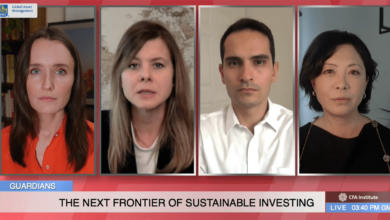Resistance Training: Testing Market Resilience

Markets were generally buoyant in June and July as participants focused on the positives and largely ignored higher risk-free rates and other phenomena with negative implications for asset prices. The ICE BofA US High Yield Index faced resistance in the low 400-basis-point (bp) option adjusted spread (OAS) range, which is consistent with where resistance has been for much of the past year.
But patience may be rewarded. Why? Because certain areas of the market have advanced further than the fundamentals justify. Momentum and fear of missing out (FOMO) seem to have driven price movements in June and July. An expensive market that becomes more expensive is one of the more difficult setups for a fundamental- and valuation-driven approach to positioning.
Yet despite a market that is fully priced overall, some attractive individual opportunities remain for those willing to search for them.

Six or seven months ago, the US high yield market looked likely to be range-bound over the near term. A rally beyond the low 400 bp range in spread appeared challenging. Even though the market broke through 420 bps several times over the past six months or so, it may signal an overextended market rather than one transitioning to a new tighter-spread reality.
ICE BofA US High Yield Spread (bps)

Source: ICE/Bloomberg
There are plenty of signs of late-cycle dynamics. The increased cost of capital over the past 18 months or so has yet to be felt by much of the market. Price action in response to the artificial intelligence (AI) craze has drawn comparisons to the late 1990s tech bubble, and some have argued it maybe years until it peaks.
The current market environment is likely an echo of the speculation-driven bubble of 2021 when cryptocurrencies, non-fungible tokens (NFTs), meme stocks, and special purpose acquisition companies (SPACs) were all the rage. AMC, Bed Bath & Beyond, and other stocks had spectacular short-term run-ups well into 2022. It is a bad sign when the main market driver looks like a bubble and the rationale for investing in it is the longevity of the dot-com bubble. After all, that bubble was so detached from reality that the NASDAQ fell by 80% from peak to trough and the US Federal Reserve cut its policy rate by 4.25% on a net basis.

While hawkish central bank signals have hurt fixed-income markets this summer, a higher-for-longer regime benefits floating rate securities, including leveraged loans and rate re-set preferred shares. The market has been pricing in higher long-term rates than the Federal Open Market Committee (FOMC) dot plot for months now, but June’s updated forecasts showed relatively significant movement among the voters: Seven of 17 respondents projected a long-term policy rate over 2.5%. In March, only four projected as much, and a year ago only two. And these projections may still be well behind the curve even if they represent a slow acknowledgement of reality.
Several areas of the credit markets are showing cracks and structural problems. With many mortgage maturities coming due in the next couple of years, commercial real estate is a particular concern. While this is hardly news to the market, the impact has not been fully appreciated. In leveraged finance, the lack of collateralized loan obligation (CLO) issuance could push more issuers to the high-yield market, increasing the pricing power for investors and the cost of capital for issuers.
Now may be a great time to stockpile excess capital to tactically deploy in the coming months if the opportunity set improves.
If you liked this post, don’t forget to subscribe to Enterprising Investor.
All posts are the opinion of the author. As such, they should not be construed as investment advice, nor do the opinions expressed necessarily reflect the views of CFA Institute or the author’s employer.
Image credit: ©Getty Images / Koh Sze Kiat
Professional Learning for CFA Institute Members
CFA Institute members are empowered to self-determine and self-report professional learning (PL) credits earned, including content on Enterprising Investor. Members can record credits easily using their online PL tracker.





